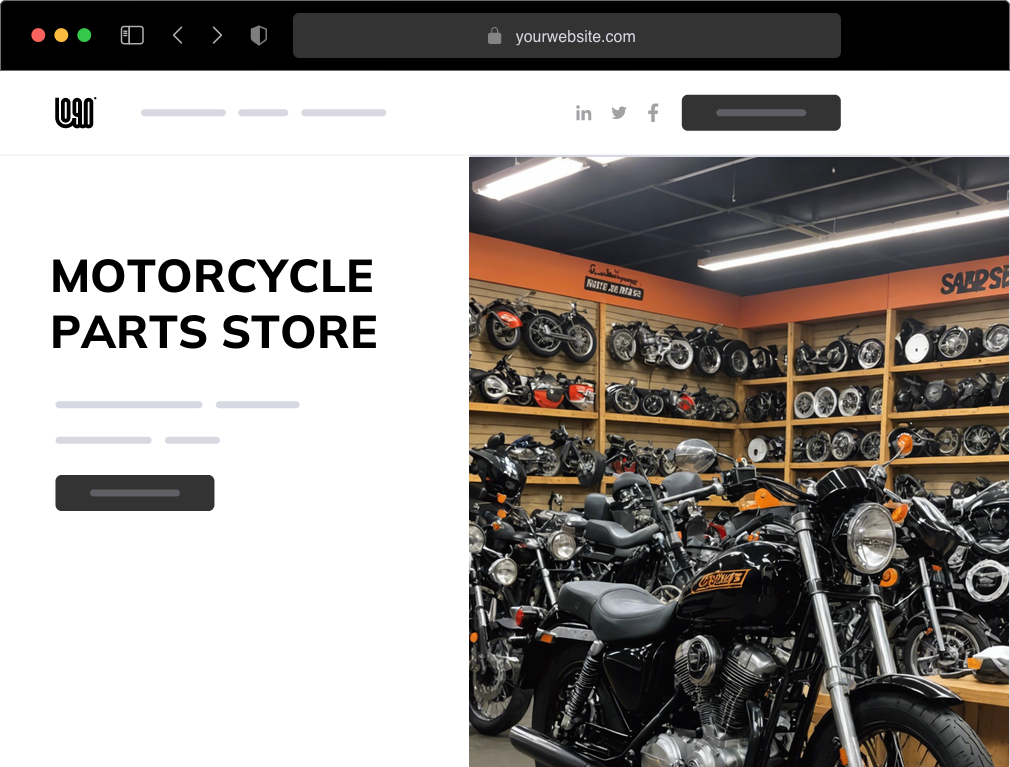Important Motorcycle Parts NZ for Peak Performance and Safety And Security
Important Motorcycle Parts NZ for Peak Performance and Safety And Security
Blog Article
Understanding Bike Gears: Exactly How to Optimize Your Riding Experience
In the realm of motorcycling, understanding the art of gear control is important for improving your riding performance. Appropriately utilizing and recognizing bike equipments can considerably affect velocity, control, and gas efficiency, changing a typical trip into a seamless, exciting trip. By incorporating specific change timing and adapting gear choice to various roadway problems, cyclists can make sure optimum engine performance and security. The subtleties of clutch control, throttle control, and gear auto mechanics bid a deeper expedition, promising to open the complete potential of your device. Just how can these techniques be utilized to truly optimize your riding experience?
Recognizing Equipment Mechanics
At the core of bike dynamics, equipment technicians play a crucial duty in transforming engine power into activity, eventually dictating speed and control. The gear proportions, carefully designed, figure out the connection in between engine changes and wheel turns, impacting acceleration and fuel effectiveness.
Understanding equipment auto mechanics begins with identifying the significance of the transmission, which houses several equipments of varying sizes. These gears engage with a process called meshing, where teeth of various equipments engage to send power. The accuracy of this communication is important; any imbalance or damages can lead to inefficient power transfer, preventing efficiency. In addition, the arrangement and size of gears affect the motorcycle's capability to take care of various tons and speeds.
Furthermore, the principle of equipment moving is integral to making best use of efficiency. Smooth and timely changes make sure that the engine runs within its optimal power band, preventing unnecessary pressure and enhancing long life (motorcycle shop). By understanding these mechanical intricacies, bikers can attain a harmonious mix of efficiency, power, and control, elevating their riding experience
Timing Your Shifts
Shift timing mastery is necessary for optimizing motorbike performance and enhancing the riding experience. Properly timed changes make sure that the engine operates within its ideal power band, which is vital for maintaining control, attaining smooth velocity, and making certain the long life of the motorbike. Bikers have to develop an intuitive sense of when to move gears, which includes recognizing the relationship between engine changes per minute (RPM) and rate.
To grasp shift timing, pay very close attention to the engine's noise and really feel, as these provide crucial hints about when to transform gears. The ideal change point usually happens when the engine approaches the top series of its power band without getting to the redline. Moving prematurely can result in a lack of power, while changing also late may trigger unnecessary engine stress
Furthermore, road conditions and riding style influence change timing. In comparison, during freeway riding, fewer changes at higher rates can be extra suitable.
Enhancing Gas Efficiency
While mastering bike gears is essential for efficiency, boosting gas performance is just as vital for both ecological and economic factors. Optimum fuel intake not just reduces functional costs yet additionally lessens the ecological footprint of riding. To accomplish this, one must recognize the detailed partnership in between gear choice and engine performance.
To start with, selecting the right equipment at proper speeds can dramatically influence fuel usage. Riding in a greater equipment at reduced speeds can lead to engine lugging, which is damaging to both gas economic situation and engine wellness. Alternatively, riding in reduced Related Site equipments at broadband results in unnecessary fuel consumption. Therefore, preserving an optimal equilibrium by shifting equipments in placement with roadway conditions and prepared for maneuvers is crucial.
Furthermore, regular maintenance plays a crucial function in fuel performance. Making certain that the motorcycle is well-tuned, with tidy air filters and properly inflated tires, can minimize and improve aerodynamics gas waste. Additionally, adopting a riding style that welcomes progressive acceleration and smooth deceleration can add to much better fuel economic situation.

Methods for Smooth Transitions
Achieving smooth gear transitions is basic to enhancing the riding experience and making certain the longevity of a bike's transmission system. Proper equipment moving not only adds to a seamless experience yet additionally decreases damage on the mechanical parts. To master the art of smooth shifts, bikers must focus on a couple of gear moto key techniques.

Secondly, clutch control plays an essential role. Involving and disengaging the clutch smoothly requires practice. The clutch bar should be released progressively, enabling for a seamless transfer of power from the engine to the wheels without triggering a jolt or abrupt motion.

Adjusting to Roadway Conditions
Navigating varied road conditions is an essential skill for any type of motorcyclist intending to maintain control and security. Whether you're riding on wet surfaces, crushed rock roads, or navigating doglegs, your capability to adapt your equipment use and riding technique is vital. Understanding how to readjust your equipments suitably can significantly affect traction and stability, visit this site right here making sure a safer trip.
In comparison, when riding on crushed rock or uneven surface, reduced equipments are more suitable. Lower equipments offer much better control and permit you to respond more promptly to unforeseen adjustments in the road surface.
Sharp curves require precise gear monitoring to balance rate and control. Downshifting prior to entering a curve can assist preserve energy while making sure the motorcycle remains secure throughout the turn. Constant technique in different problems boosts your capability to anticipate and react to adjustments in road structure and incline.
Final Thought
Mastering bike gears dramatically boosts the riding experience by improving control, acceleration, and gas effectiveness. A complete understanding of equipment auto mechanics and exact change timing makes sure the engine operates within its ideal power band, while smooth shifts through efficient clutch and throttle sychronisation increase comfort and performance. Adapting equipment option to numerous roadway conditions, such as making use of greater equipments on damp surface areas and lower gears on gravel, further improves handling and safety. Ultimately, these skills raise the overall trip.
Comprehending equipment mechanics starts with identifying the significance of the gearbox, which houses multiple gears of differing dimensions. These gears engage with a process known as meshing, where teeth of different equipments engage to transmit power (motorcycle shop). Gentle adjustments to the throttle throughout equipment shifts can avoid jerky movements and maintain a consistent riding pace
Whether you're riding on damp surfaces, gravel roadways, or navigating sharp turns, your ability to adjust your equipment usage and riding technique is critical. Adapting equipment option to numerous road conditions, such as using greater gears on damp surface areas and reduced equipments on crushed rock, additional improves handling and security.
Report this page